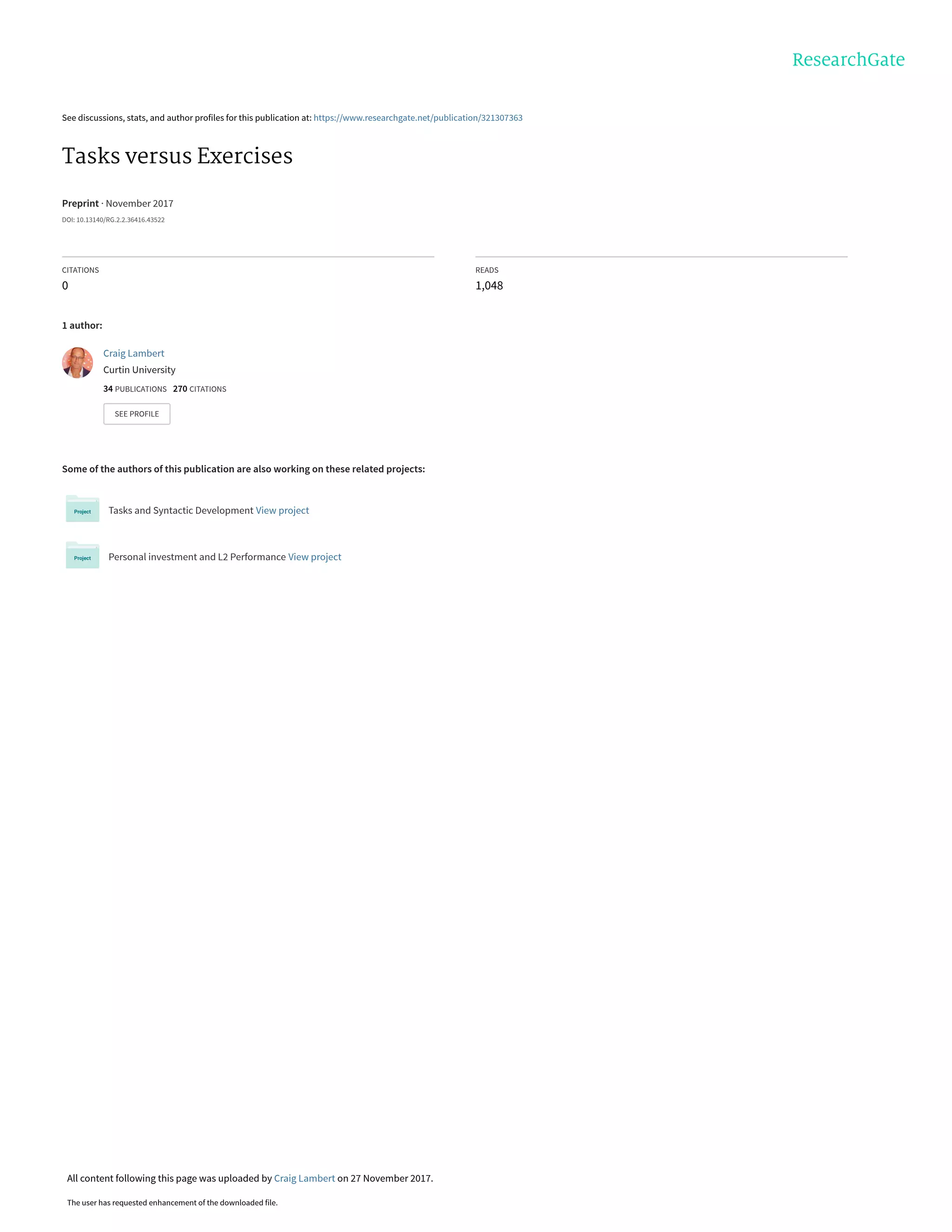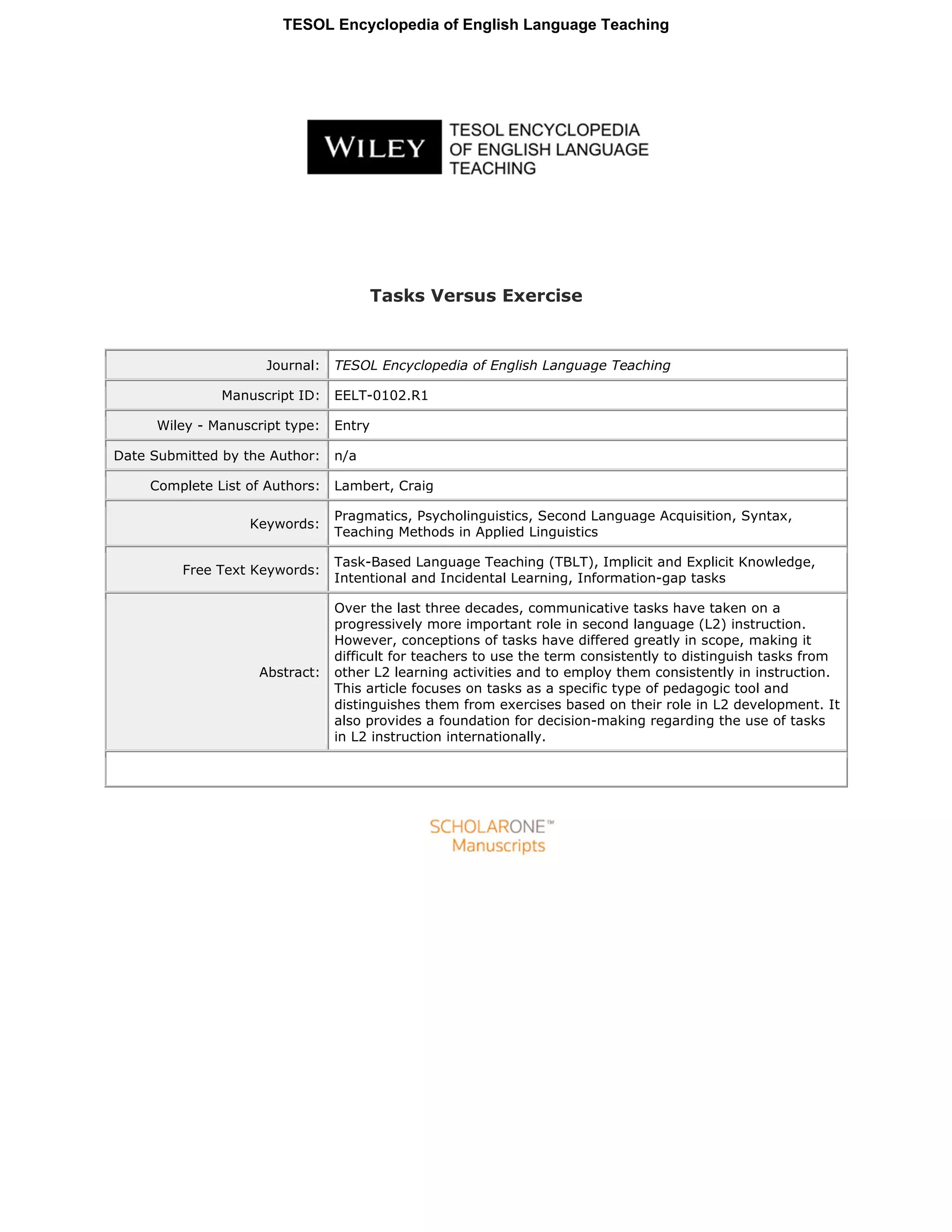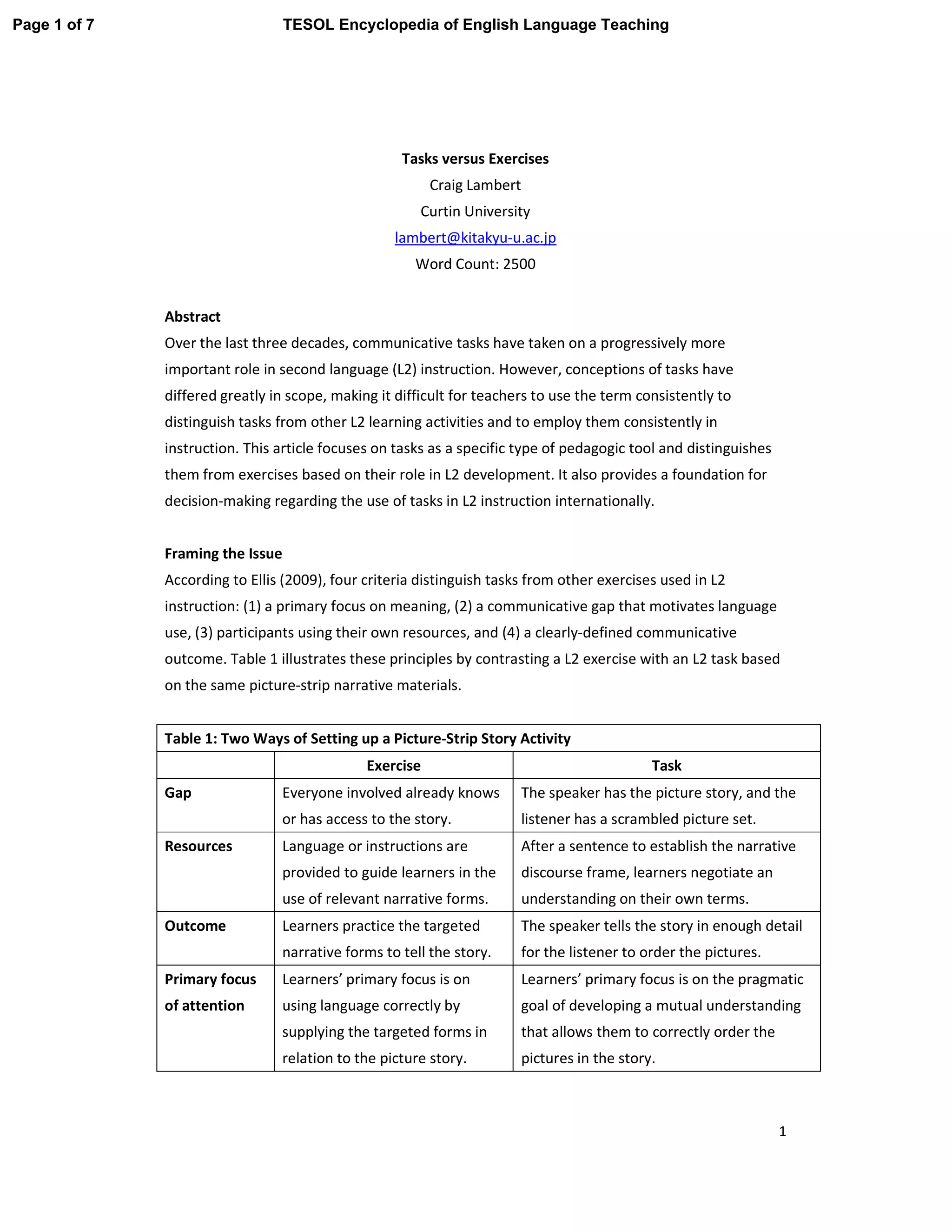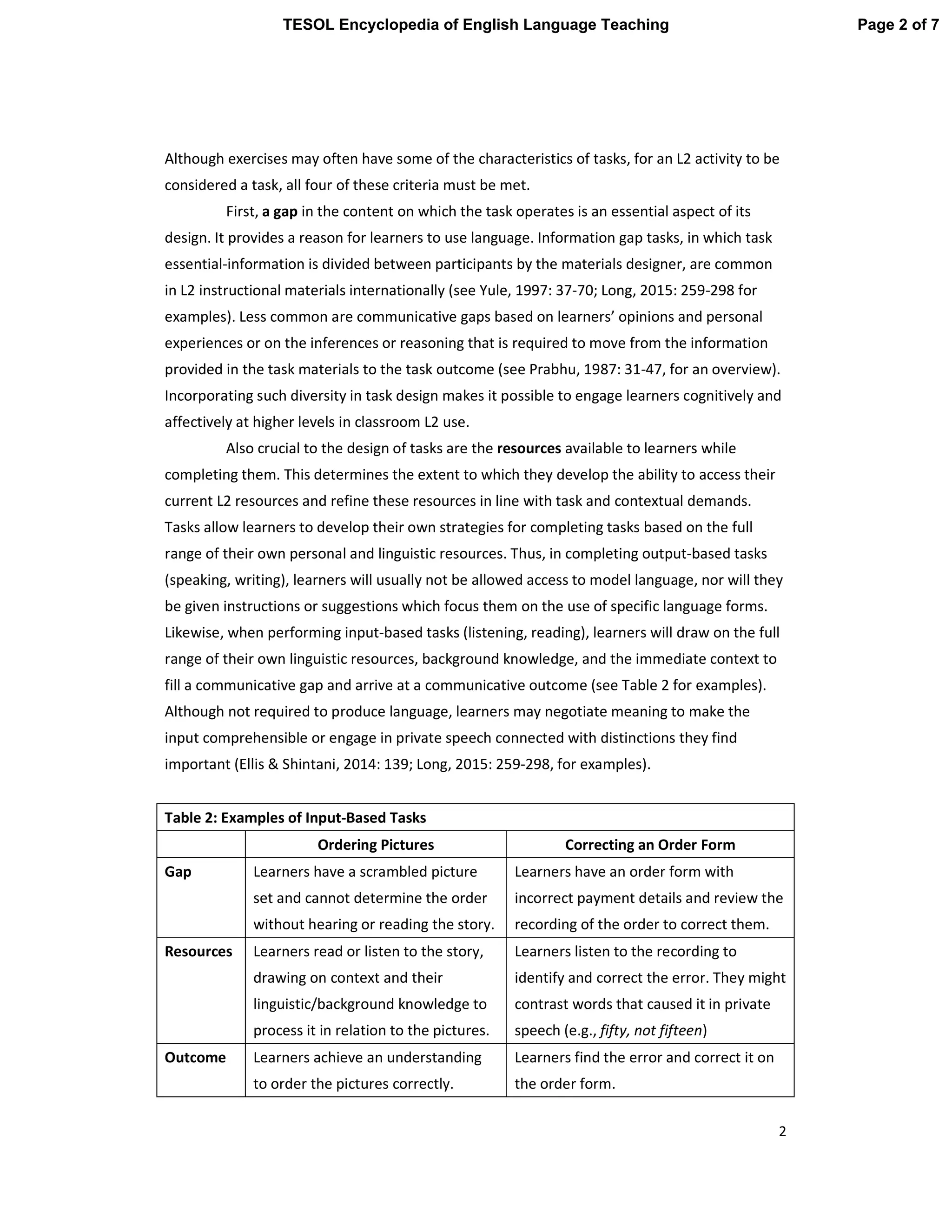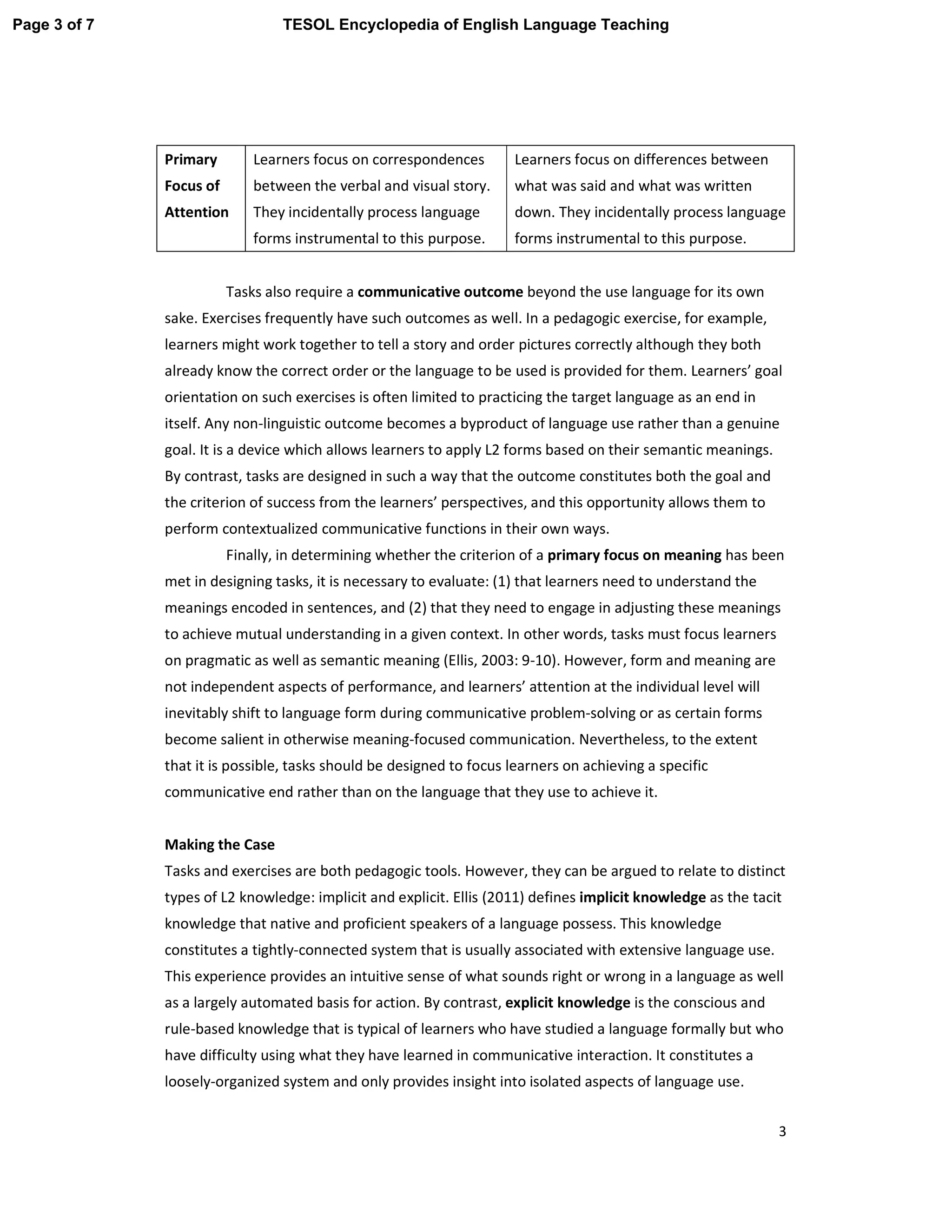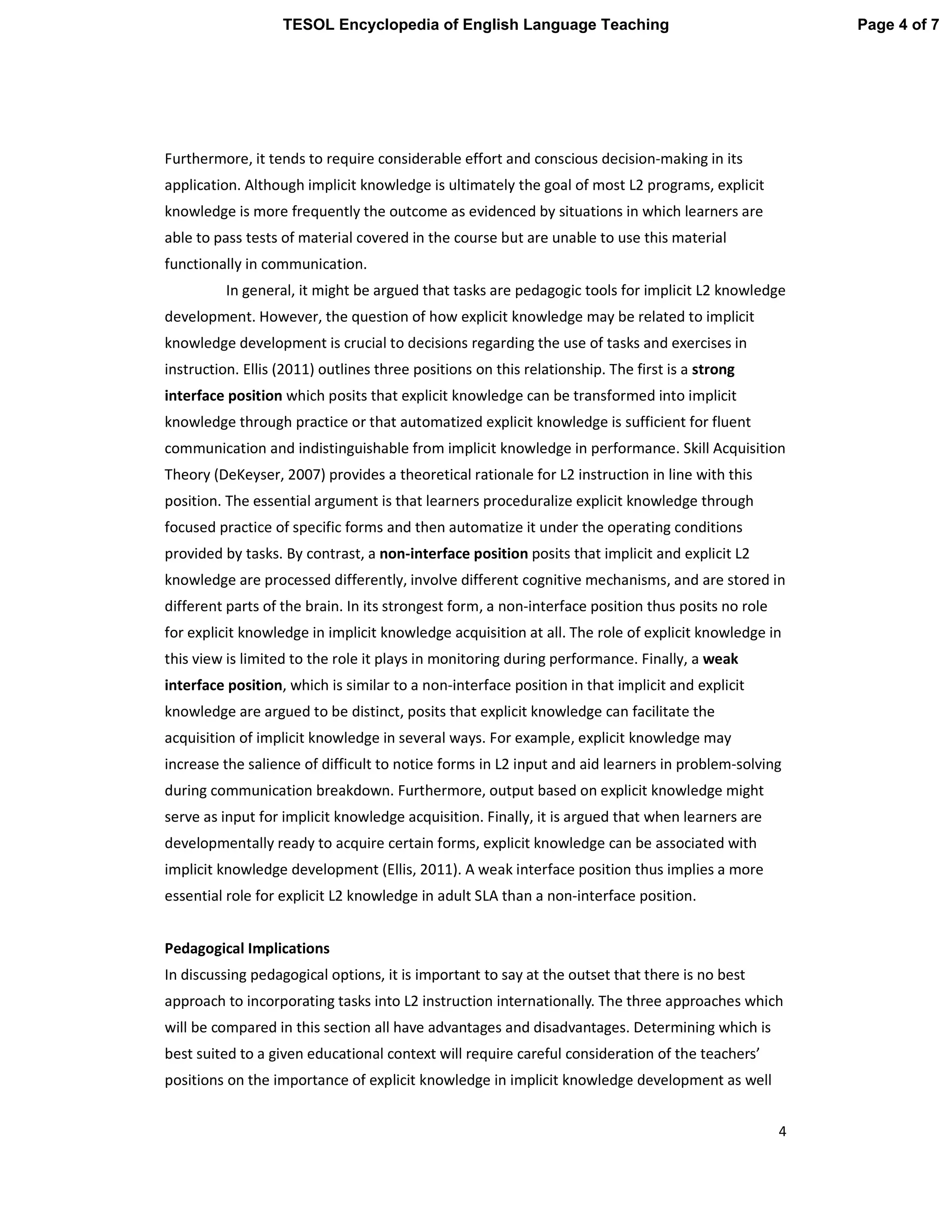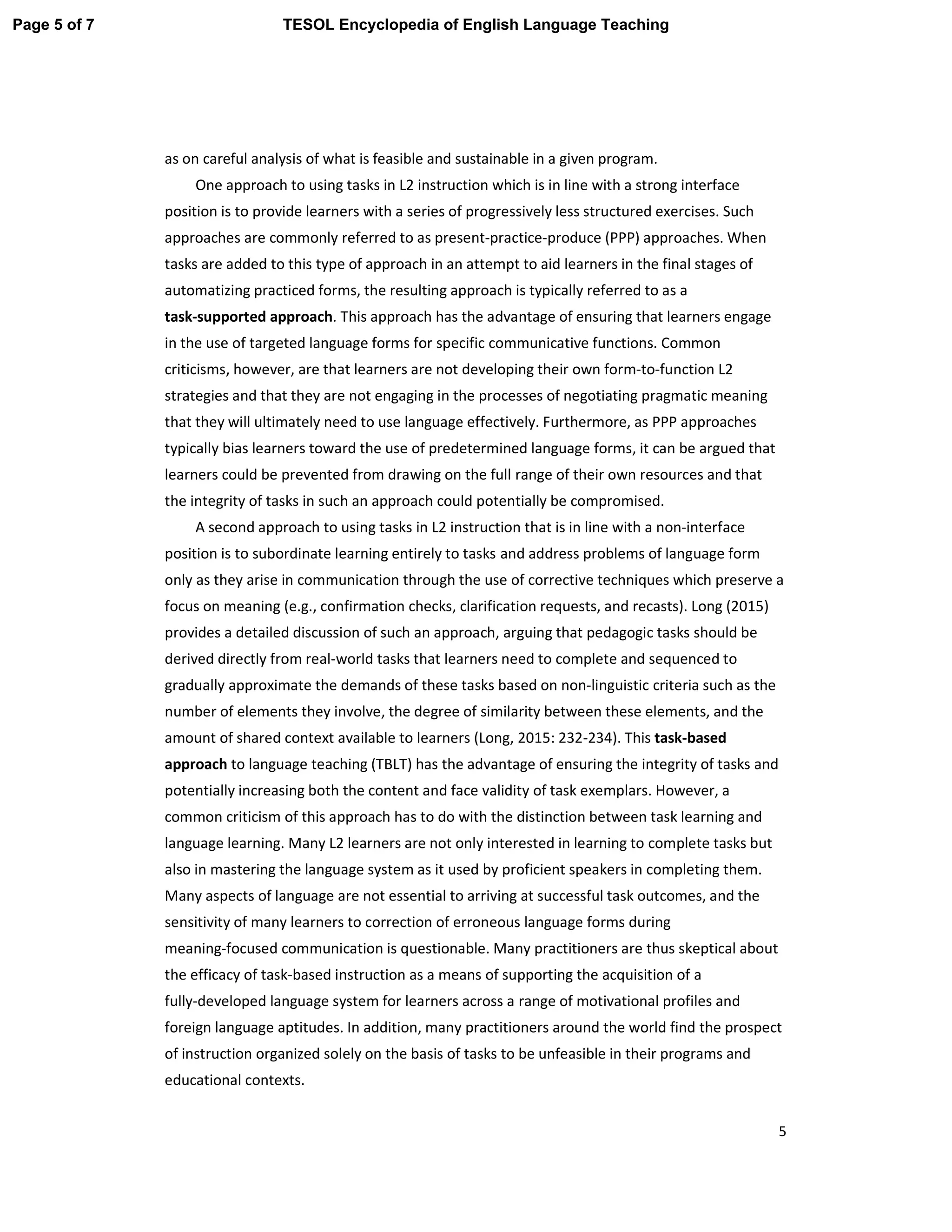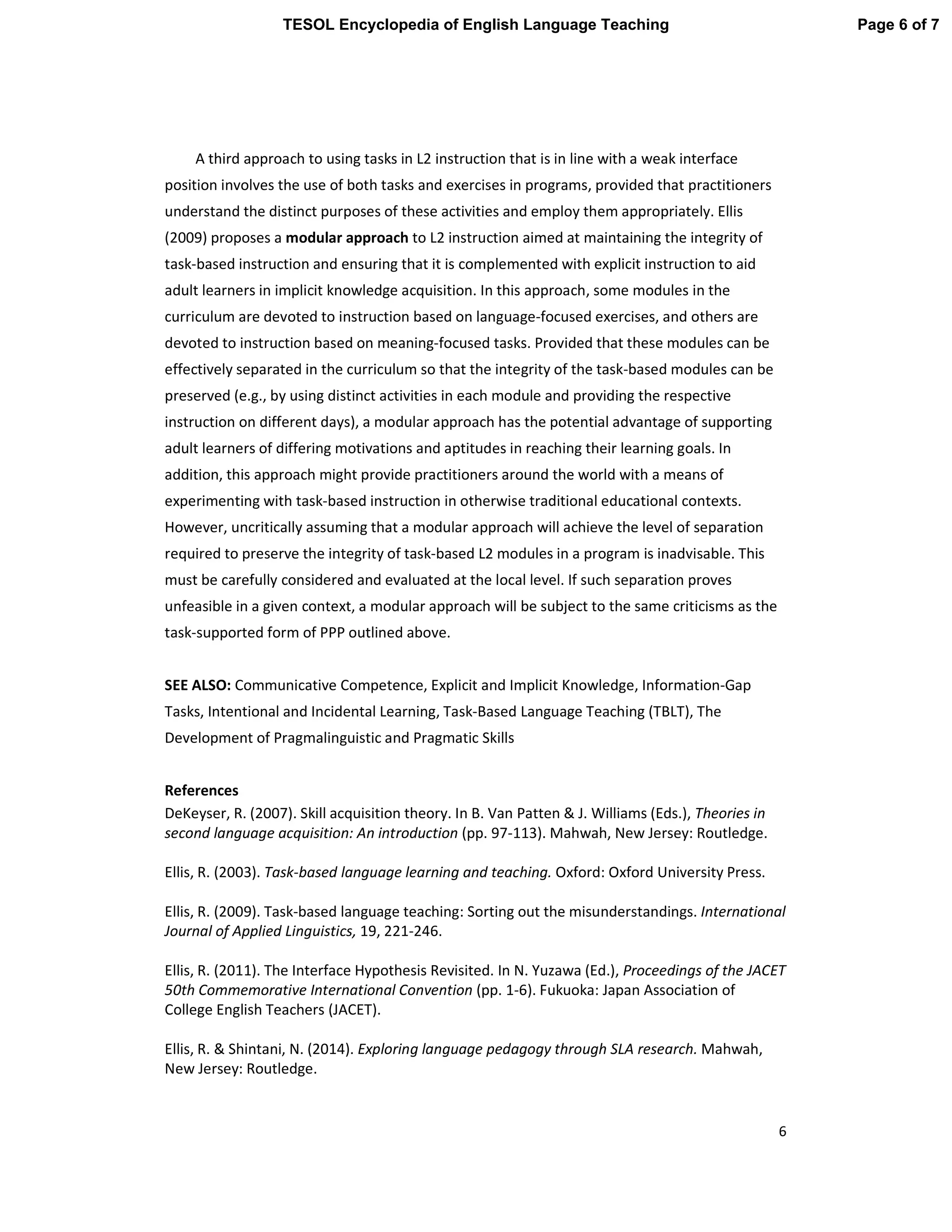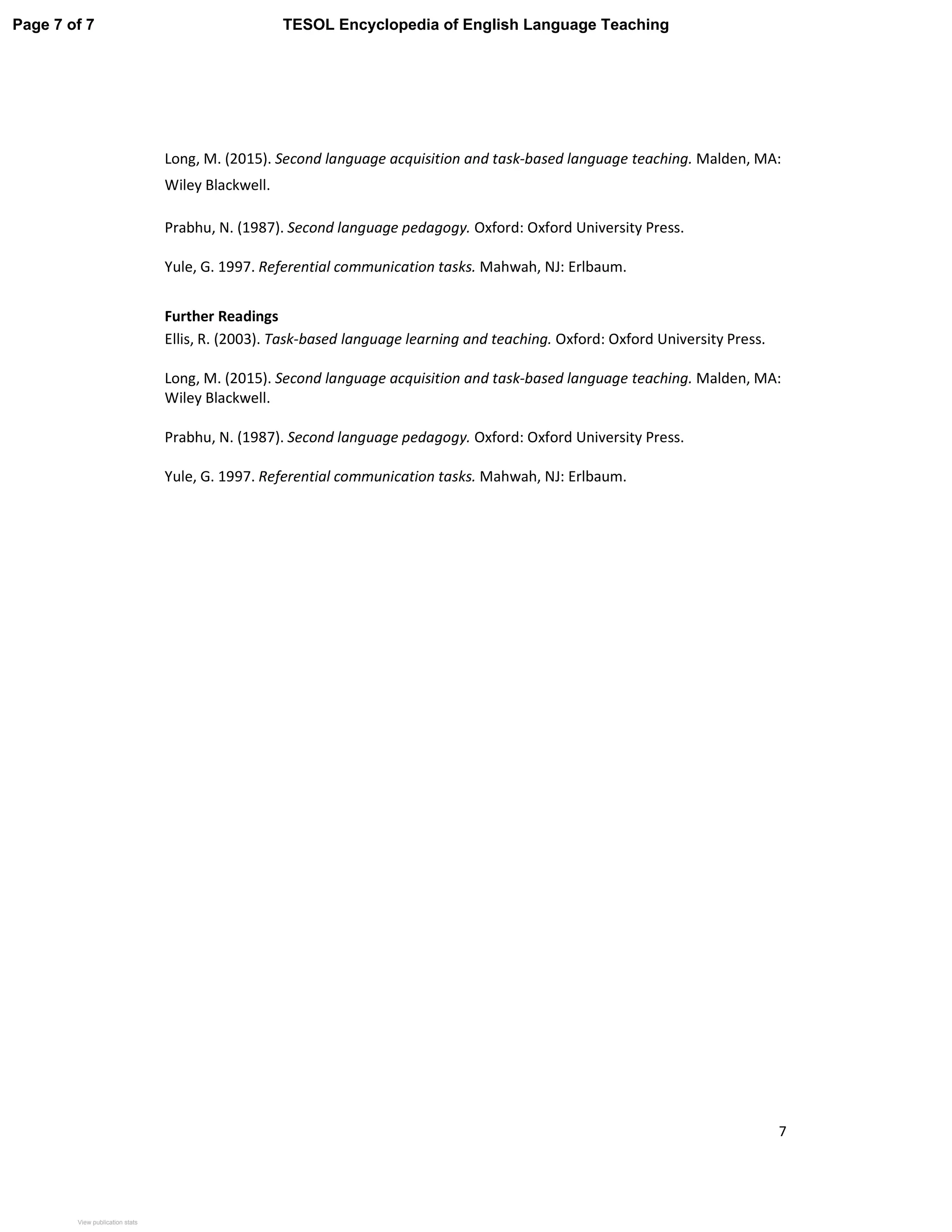This document summarizes the key differences between tasks and exercises in second language teaching. Tasks are distinguished from exercises based on four criteria: 1) a primary focus on meaning, 2) a communicative gap that motivates language use, 3) participants using their own resources, and 4) a clearly defined communicative outcome. Tasks are argued to develop implicit linguistic knowledge, while exercises can develop explicit knowledge. The document discusses three approaches to incorporating tasks in language teaching based on theories of the relationship between implicit and explicit knowledge: a task-supported approach, a task-based approach, and a modular approach.
